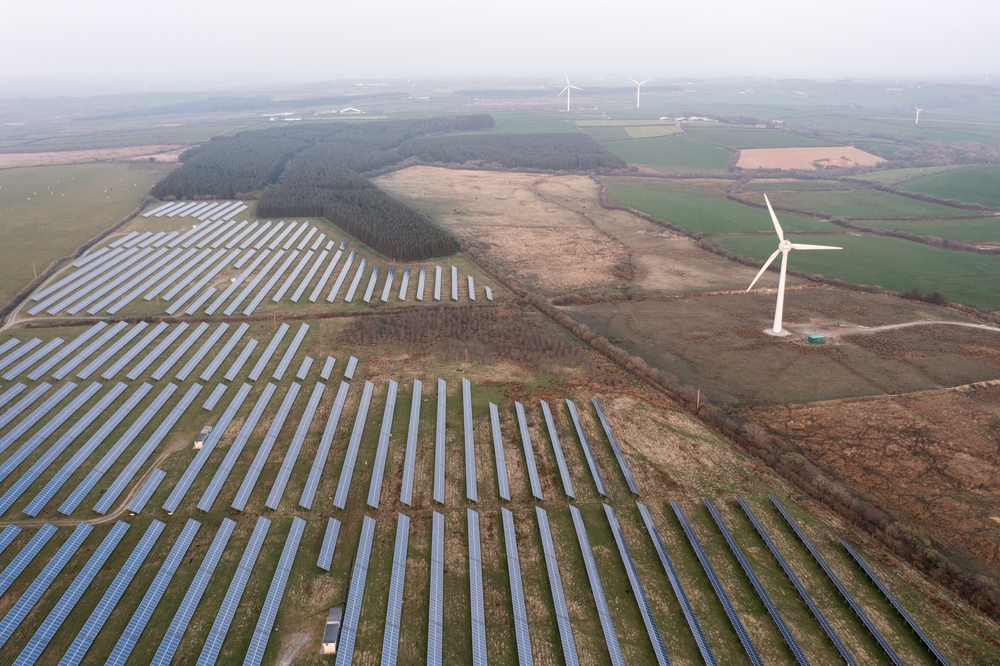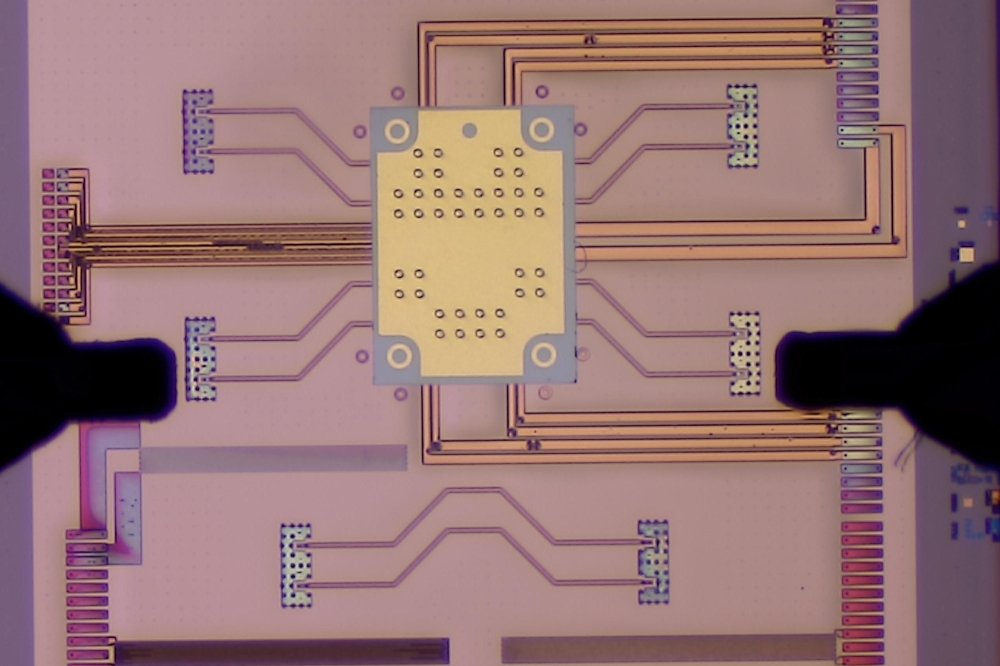Resonators provide LEDs with laser-like performance
The problem of internal reflection Compared with light bulbs, where only a small percentage of the radiation is emitted as visible light, the generation of photons via the recombination of electrons and holes in semiconductors is so efficient that nearly all of the energy can be converted to light at a determined wavelength. Hence semiconductors would be ideal light sources if certain effects were eliminated. These effects can be observed from a swimming pool. If one were to look up while submerged in water, one would see the sky and clouds directly above. If the gaze were lowered, at a critical angle one would see a mirror image of the walls or bottom of the pool reflected from the water s surface. This angle of total reflection at the water-air interface is relatively large at around 40°.
Light trying to escape from a semiconductor crystal fares much worse because of the large refractive index of semiconductors. A semiconductor s angle of total reflection is typically 26°. Only about 4% of the light, which is generated isotropically, escapes. The rest is absorbed in the semiconductor crystal and converted to heat.
The resonant cavity There are a number of successful approaches to making LEDs more efficient, such as additional lateral light extraction or internal multiple reflection on slanted surfaces. However, none of these solutions tackle the root of the problem: the isotropic spontaneous emission.
By using a resonator, a feature found in lasers, the RCLED does precisely that (figure 1). Conceptually, an RCLED consists of several regions: a high reflectivity lower mirror over the absorbing substrate; an extremely thin, one wavelength thick, light-producing layer; and a semi-transparent upper mirror through which light is extracted. (See "How an RCLED works". A review on the RCLED principle can be found in Benisty et al.).
Although it seems logical to apply a mirror to the bottom of a light-producing layer in order to reflect as much light upwards as possible, it may seem somewhat paradoxical to apply a mirror on top of the light-producing layer if as much light as possible is to be extracted upwards. The trick is that the upper mirror together with the lower mirror forms a resonator. Other than in free space, the propagation of light is not possible in every direction for every wavelength in a resonator. In fact, there are directions of constructive and destructive interference, and so there are directions in which light may be emitted and others in which spontaneous emission is impossible. For a specific wavelength, the directions in which emission and propagation is possible are called resonator modes.
No problems occur with the extraction of light in semiconductor lasers because stimulated emission is used as the light-generating process. Photons of a specific mode induce emissions of other photons in the same mode. This effect is further strengthened by the number of photons already in the mode. Ideally, following a brief tuning phase, a single mode uses all the electron-hole pairs available, leaving no electron-hole pairs for the other modes. It is easy to construct a semiconductor laser in such a way that the direction of propagation of the winning mode is perpendicular to the semiconductor-air interface. Thus the problem of light extraction is solved.
In an LED, where spontaneous emission is used for light generation (i.e. the emission is not dependent on a photon field), a photon can only be emitted in an available mode, not in a direction of destructive interference. The modes and the spontaneous emission need to be tailored so that as many photons as possible are emitted in the light extraction cone defined by the angle of total reflection.
The actual light generation in an RCLED occurs in quantum wells just a few nanometers thick, which are positioned at a maximum of the cavity standing wave pattern. This not only increases the extraction efficiency, but also enhances the directionality of the emitted light when the resonator is designed appropriately (see "Growing an RCLED structure"). The current world record for RCLED efficiency in the visible wavelength region is 12% and is held by our team at Osram Opto Semiconductors (Wirth et al.).
Applications for RCLEDs Of course, an RCLED can be used in any arbitrary LED application, but a surface emitter with forward-directed radiation displays its strength in applications that require a lot of light inside a small solid angle, such as photo sensors or scanners. The integration of many small RCLEDs on a chip makes it possible to establish a "lightcomb", which is needed for LED printers and allows for a much larger page throughput than provided by laser printers.
However, the RCLED will find its first high-volume application as an emitter for data transfer through plastic optical fiber (POF). A POF system comprises emitters, drivers, fibers and detectors. Plastic step-index fibers of 1 mm diameter are the fibers of choice for low-cost networks in consumer markets. They offer a local absorption minimum at 650 nm. The absolute absorption minimum is located in the green and yellow spectral range where the detector is less sensitive. The 650 nm regime has so far offered the best compromise between detector sensitivity and absorption by the fiber.
Due to their large core diameter, typically 0.5-1 mm, POFs place fewer demands on the tolerance of the fiber-optic connector. For good coupling of the light in glass fibers with a diameter of 0.005-0.05 mm, the semiconductor laser in question must be positioned within a few microns of the front of the fiber.































